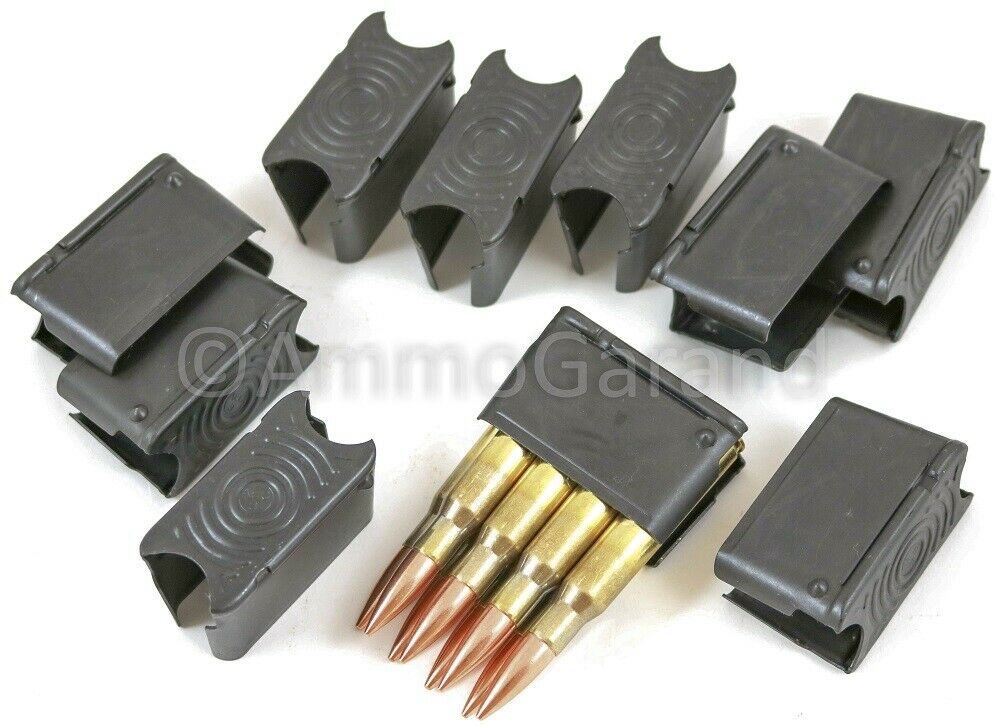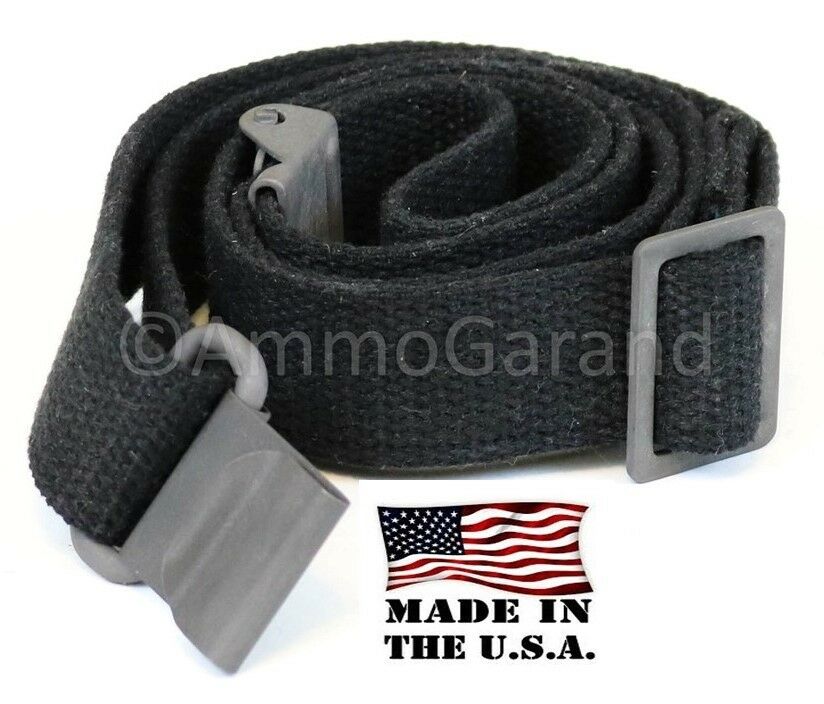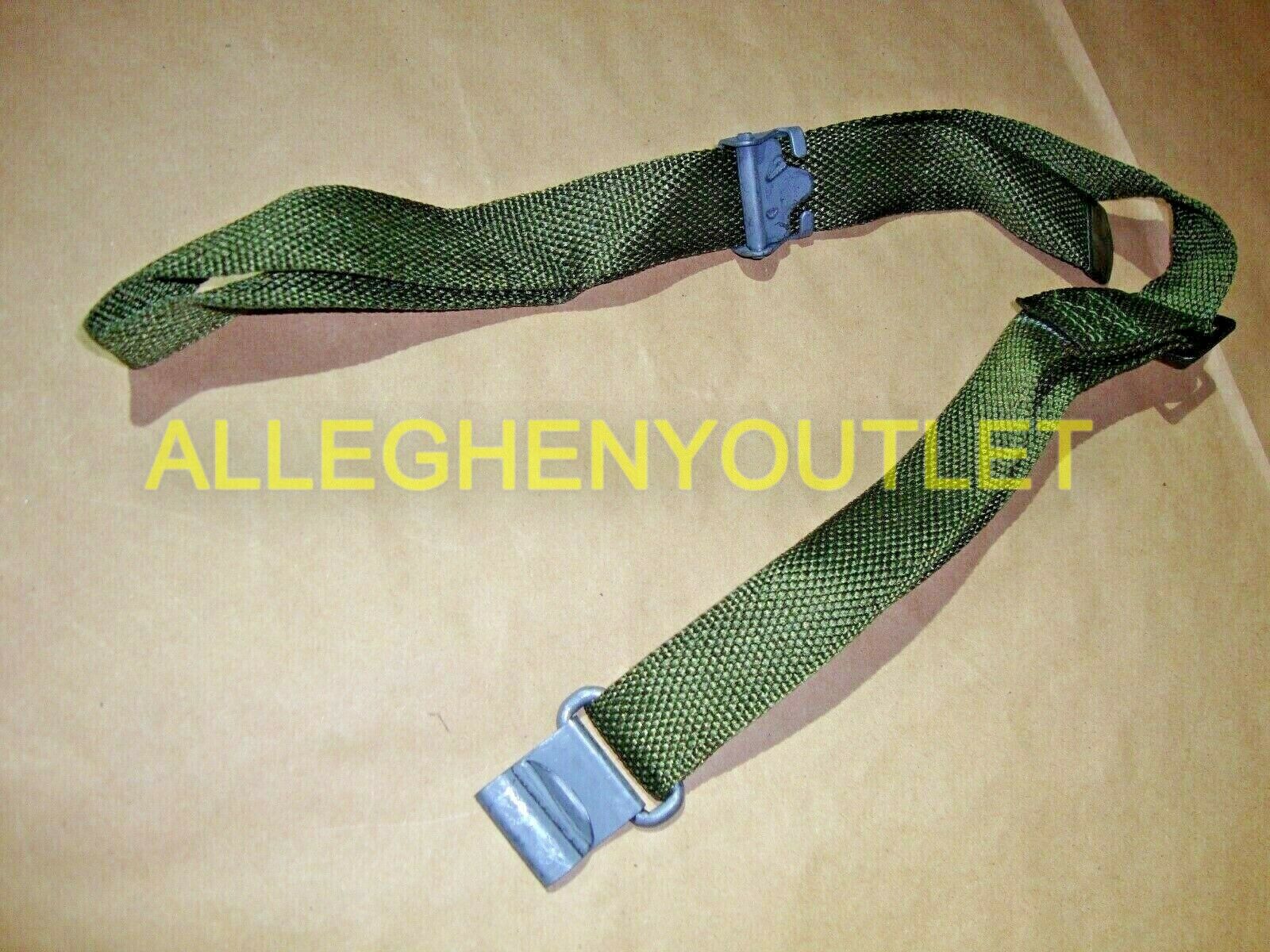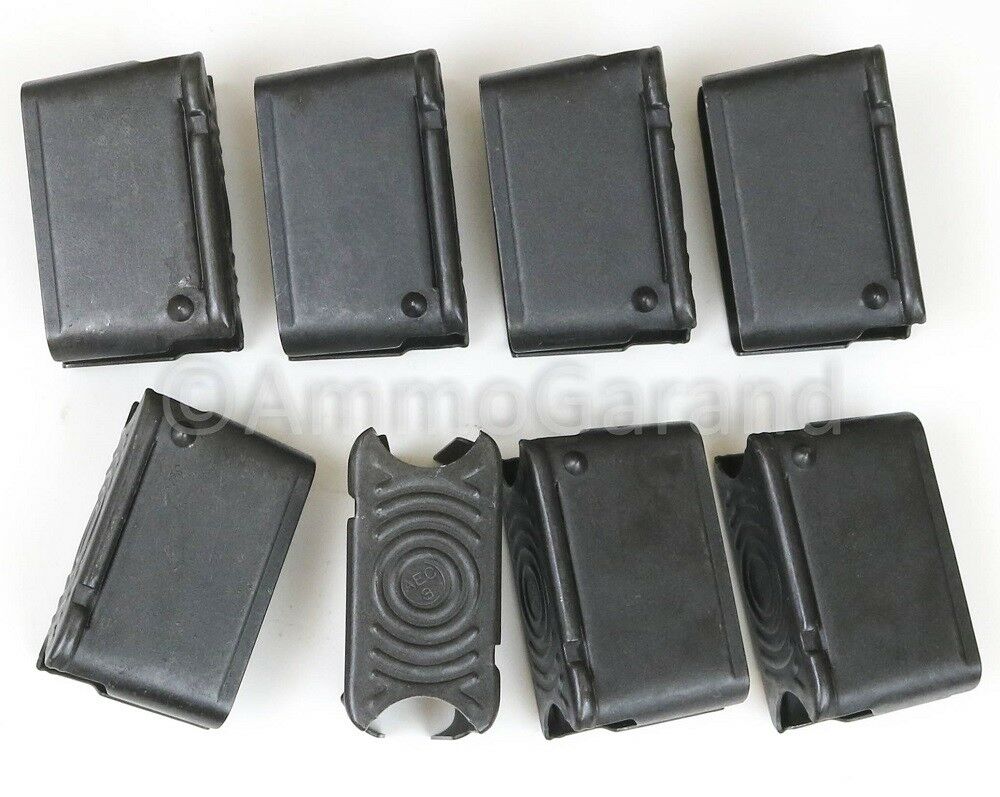-40%
WW2 Canteen Set "Transitional" ("GATES MFG.1945; A.G.M.CO. 1944 VOLLRATH 1945")
$ 71.28
- Description
- Size Guide
Description
WWII "Transitional" Canteen Set, Complete and MINT!!Mint
M1910
"Transitional"
CANTEEN COVER
from a
SCARCE
contractor, the
GATES
MANUFACTURING CO
.
of Denver, Colorado
("U.S. / GATES MFG. CO. / 1945").
- The
BODY
of the Cover is
Light Shade OD#3
and the
EDGE BINDING
and
ATTACHMENT TAB
of the
M1910 Belt Hook
are of
Dark Shade OD#7.
- The
san serif font
used on the
"U.S."
cypher on the front of the Cover is unique to
GATES MFG. CO.
-
ZERO
frays, holes, snags, stains, loose stiches, personalized markings!
- The
"KliKiT * PULL"
SNAPS
of Blackened Brass and are in
PERFECT
condition and a less frequently hardware brand
-
ZERO
wear or corrosion to the
SNAPS
and the Black Painted
M1910 BELT HOOK.
- The Gray
WOOL FELT INSULATION
is immaculate.
*****
Mint NOS Unissued
M1910 "Rounded Lip" CANTEEN CUP of Aluminum from the ALUMINUM GOODS MANUFACTURING COMPANY
of
Manitowoc, Wisconsin
("U.S. / A.G.M.CO. / 1945")
-
ZERO
dents, scratches, corrosion, or markings to the
BODY
of the Cup, inside and outside!
- The exterior is "bead-blasted" and
NON-REFLECTIVE;
the
interior is
bright and
REFLECTIVE
as well as
FLAWLESS and SPOTLESS.
-
HANDLE of "Corrosion Resistant Steel" (CRS) is stamped,
("U.S. / A.G.M.CO. / 1945")
"
and
shows moderate discoloration and very superficial corrosion.
*****
Mint NOS Unissued M1942 CANTEEN, "horizontal welded-seam" of Stainless Steel from the VOLLRATH COMPANY of Sheboygan, Wisconsin (
"U.S. / VOLLRATH /1944").
-
ZERO
dents, dings, or scratches!
- The
M1942 Bakelite CAP
with the recessed Chain-post is in
PERFECT
condition with
ZERO
scratches, cracks or weathering.
- The ORIGINAL chipped
CORK GASKET is present.
- The
CHAIN
has
ZERO
corrosion!
*****
The Gates Manufacturing Company:
The
Gates Corporation
is one of the largest privately held companies in the United States with sales of more than .4 billion from automotive and industrial rubber products
, formed-fiber
products
, automotive accessory-drive systems, and petroleum property development. Its
Gates Rubber Company
, the largest of its subsidiaries, generates about 75 percent of the company's total revenues and is considered the world's largest non-tire rubber company.
T
he
Gates Corporation
traces its origins to 1911, when Charles Gates Sr. bought the
Colorado Tire and Leather Company
in Denver, Colorado. Gates had originally headed west in 1904 after graduating from the Michigan College of Mining and Technology. He took a job as a mining superintendent near Tin Cup, Colorado, but upon hearing of a gold strike in Nevada, he headed there and was hired as a mine engineer for the
Nevada United Mines Company
. In 1910, he settled in Denver, married, and started looking for a business to buy. The
Denver Post
's
classifieds listed three companies for sale: a manufacturer of soap, a manufacturer of toilet paper, and a mail order company that sold tire covers. Charles, age 33, and his wife Hazel, bought the
Colorado Tire and Leather Company
for their entire combined savings of ,500.
The business consisted of a one-room shop with a typewriter and one 18-year old employee. The company's only product was the
Durable Tread
tire cover, a studded leather band that attached to the car
r
tires to extend the life of the tires. The former owner of the
Colorado Tire and Leather Company
had shown the Gateses stacks of invoices, promising a healthy profit every month. After buying the company, however, Charles and Hazel Gates found they had been tricked. The piles of invoices represented not one month but several months worth of orders, many of which were withdrawn when the company changed hands. Furthermore, the company had incurred a significant debt and along with the invoices were several bills. Undaunted, Charles managed to persuade his brother John, an engineer, to join the company too.
Although the tire covers proved a worthy product, only about 5,000 cars were in use in Denver in 1911. The Gateses were selling a product that had too small a local market for the company to survive, let alone thrive. The two brothers launched an aggressive sales campaign through direct mail to reach the automobile users back east. In eighteen months, the business had 18 employees and showed a profit of 0.
The power of advertising again helped Gates to expand its product line.
The Colorado Tire and Leather Company
became the largest halter manufacturer in the west after the Gates brothers persuaded
Buffalo
Bill Cody
to try the horse halters the company made from leather scraps.
Buffalo Bill's testimonial boosted sales,
even though the halters cost twice as much as those of the competition.
Over the next few years, Gates introduced other new products, including car fan belts, blowout patches, and emergency boots for tires. But by 1914, a new material was being introduced into many products--rubber--and it was the perfect material for car tires, belts, and hoses because of its flexibility, adhesion, and durability. Gates abandoned leather tire covers and embraced the new technology, introducing retreads made of fabric and rubber.
Colorado Tire and Leather Company
soon outgrew its rented space. The Gateses invested ,000 in the construction of a small two-story building to acommodatre the company. The second floor was used for halter production, and the first floor housed the company's offices and production facilities for the
Half-Sole
, a retread made of rubber fabric that could be cemented to a worn tire. The Half Sole became one of the company's biggest successes.
In 1917, the company's name was changed to the
International Rubber Company
to reflect its new direction. That year John Gates developed the
first rubber and fabric V-belt
for use in the automobile. His first version of this car part was made of twine dipped in rubber cement, coated with fabric, and vulcanized in a mold, providing a superior product to the simple, hemp rope then in use on car radiator fans. The V-belt would remain a mainstay of the
Gates
company.
Gates's company was busy during the first World War. The government classified the Half Sole as a priority product due to the rubber it conserved. After the war, however, the price of rubber dropped from .25 to 15 cents a pound, and the
Half Sole
protective cover became obsolete as tires became inexpensive to manufacture. In 1919, the Gates brothers were forced to develop a new product to take the place of the
Half Sole
, and the company began manufacturing balloon tires. That year the company was again renamed as
The Gates Rubber Company.
During 1920 Gates faced several challenges. Economic recession left tire manufacturers with huge inventories of tires, which they had stockpiled because of the low cost of rubber, and now they were forced to cut prices and operating costs. Despite the poor economy, Charles Gates decided to market a new tire it had developed. The revolutionary Super Tread, so named because of its wider, heavier tread that increased mileage, was introduced during this time, and while tire sales dropped 35 percent nationwide, tire sales for the
Gates
company increased 40 percent in 1921. Meanwhile,
Gates's
company developed and marketed belts in 20 sizes to fit most cars on the market. The introduction of the car generator during this time caused sales of the
Gates V-belt
to nearly double. Towards the end of the decade,
Gates
introduced molded rubber goods such as hydraulic seals and also began manufacturing garden hoses and radiator hoses.
When the stock market crashed in 1929 and the economy plummeted, Gates managed to remain profitable. Moreover, the company increased its focus on marketing, putting more representatives out in the field to drum up business. The
Gates Rubber Company
weathered the Great Depression, and, in fact, by 1934, had 2,500 employees, annual sales of million, and a position as the sixth largest rubber company in the United States. The company was manufacturing more than 4,000 rubber products, which Gates called "necessary accessories to essentials," items that people would need despite national events or the ups and downs of the economy.
When the country became involved in World War II in 1941, Gates's products were essential. As men left for military service, hundreds of women began working in the company factories to help meet the wartime demand for belts, tires, and other parts for military vehicles. However, when the Japanese captured Singapore and the Dutch Indies, U.S. access to natural rubber was virtually cut off, with the country having only about six months worth of rubber stockpiled. To sustain the war effort, the rubber industry needed hundreds of thousands of tons of scrap rubber to recycle. Although Americans across the country undertook a great rubber collection drive, even taking the tires off their cars and donating rubber boots and raincoats, the nation needed still more rubber.
During this time, synthetic rubber had been developed and produced, but only in small laboratory quantities
.
In response to the country's need, U.S. rubber companies, including Gates, joined forces to form the
Copolymer Corporation
to manufacture synthetic rubber. Charles Gates's son, Charles Jr., spent three years at this company as an assistant chief engineer. During the war years, research was also ongoing in the development of synthetic fibers such as rayon and nylon.
The postwar years were prosperous for the country and Gates Rubber. Demand was high for new products. Between 1946 and 1954, sales at Gates increased from million to million. The company, which by this time employed a staff of nearly 5,500, was the world's largest manufacturer of V-belts and the sixth largest rubber company in the United States. Gates had expanded from a one-room shop to a 53-acre complex with more than 30 buildings.
*****
The Vollrath Company:
1874-1899
Jacob J. Vollrath built the
Sheboygan Cast Steel Co.
in 1874 in Sheboygan, WI. They produced railroad frogs, small cast parts for the furniture industry, cooking ranges, and agricultural implements. Jacob's eldest son, Andrew, returned from Germany in 1876 having learned the art of creating enameled cast iron. The company began to manufacture a small amount of enameled cast iron utensils that Jacob sold himself. The company was incorporated as the
Jacob
J. Vollrath Manufacturing
Company
in 1884. Jacob's son, Carl A.W., originated and patented a speckled enamel in 1889
1900-1939
In 1900 the company chose to devote itself entirely to the cooking utensil field. To help accommodate expansion, offices in Chicago and New York were opened in the first few years of the new century. A new plant and office building were built in Sheboygan and the plant continued to expand for greater production. By the late 1930's
Vollrath
began replacing some enamelware with stainless steel.
1940-1959
Vollrath
began gradually converting to war work in late 1941, increasing the government supplies monthly until reaching full capacity on defense work in late 1942. They had a very limited catalog of items for civilian use. On June 28, 1945,
Vollrath
was awarded the
Army-Navy
"
E
"
Flag
for their record in the production of materials needed in the war effort. Walter J. Kohler, Jr. became
The Vollrath Company
's fifth president in 1947. When the polio epidemic struck,
Vollrath
developed the
Polio
-
Pak Heater
which produced 15 double-thick steam heated woolen packs to administer to patients. Many emergency orders were received during the night and often shipped by air express, or driven personally by a company employee 100 to 200 miles from Sheboygan.
*****
History of the Aluminum Goods Manufacturing Company, a name synonymous with U.S. canteens:
Aluminum Goods Manufacturing Company
made cooking and other utensils out of aluminum. In 1957, the company changed its name the
Mirro Aluminum Company.
The Company started producing aluminum boats in 1956. The brand name they chose was called Mirrocraft.
Mirro
first decided to produce aluminum boats because of its production capability to roll aluminum sheet from ingot metal.
Mirro
Aluminum Company’s
primary business was the production of aluminum cookware.
Founding - 1940
The roots of the company can be traced to the founding of three companies: the
Aluminum Manufacturing Company
founded by Joseph Koenig in
T
wo Rivers, Wisconsin, in 1895; the
Manitowoc Aluminum Novelty Company
, founded in neighboring Manitowoc, Wisconsin, by Heny Vits in 1898; and the
New Jersey Aluminum Company
founded in 1890 in Newark, New Jersey. In 1909, the three companies merged, and the resulting company was renamed the
Aluminum Goods Manufacturing Company.
It was headquartered in Manitowoc and headed by Vits as president and Koenig as vice president. In 1910, in a 0,000 deal between George Vits and the eastern capitalists, all offices and manufacturing were moved to Manitowoc.
The company received its first government contract in 1911, winning an ,000 contract to build aluminum canteens developed by Joseph Koenig for the army.
Koening filed for a patent in April 1911 and was granted patent US1062716 in May 1913.
By 1914, the company reported that its employment was over 400 and building space had grown to almost 90,000 sq ft. In 1915 the company acquired the facilities of the
Standard Aluminum
Company,
another manufacturer in Two Rivers. For the next two years the company concentrated on the production of cooking utensils. The
Mirro
brand was introduced in 1917.
The company continued to grow and by 1920 had increased its capital to ,000,000.
1941-1982
During World War II Mirro retooled its factories to make aluminum products for the military. When the war ended in 1945, the company expanded into aluminum toys,
making the popular Sno-Coaster saucer shaped sled.
In 1957 shareholders approved a name change to the
Mirro Aluminum Company.
In 1958,
Mirro
began manufacturing a line of 16 ft aluminum boats under the
Mirro-Craft
name. The boats, introduced at the
Chicago National Boat Show
in February of that year, were designed by naval architect David Beach.
Shipment of production boats did not start until January 1959.
In late 1971
, Mirro purchased Cruisers, Inc.
, of Oconto, Wisconsin,a manufacturer of Fiberglass boats ranging in length from 16 ft to 25 ft.
At its peak,
Mirro
was the
world's largest manufacturer of aluminum cooking utensils,
and over time it had as many as eight plants in three states, with products ranging from pots and pans to small boats and aluminum siding.
In 1982 the boat business was divested. It was purchased by employees and moved to Gillett, Wisconsin and a plant formerly owned by M
irro.
The new company was named Northport, Inc. The
MirroCraft
tradename was transferred to the new company. In 2003 Northport was purchased by
Weeres
pontoons of St. Cloud, Minnsesota. The fiberglass boat portion was sold to
Cruisers,
Incorporated
.This company is now known as
Cruisers Yachts



















